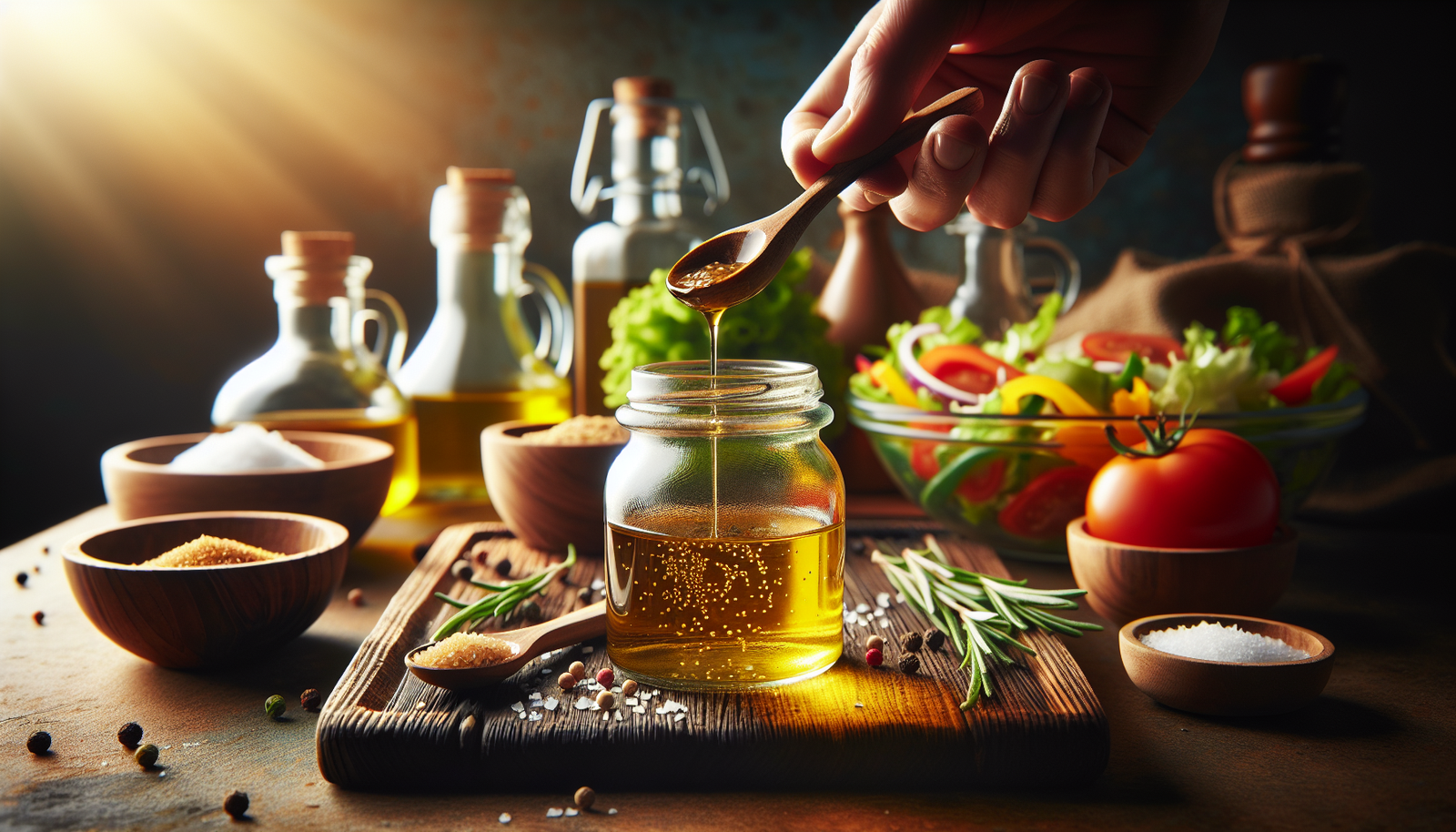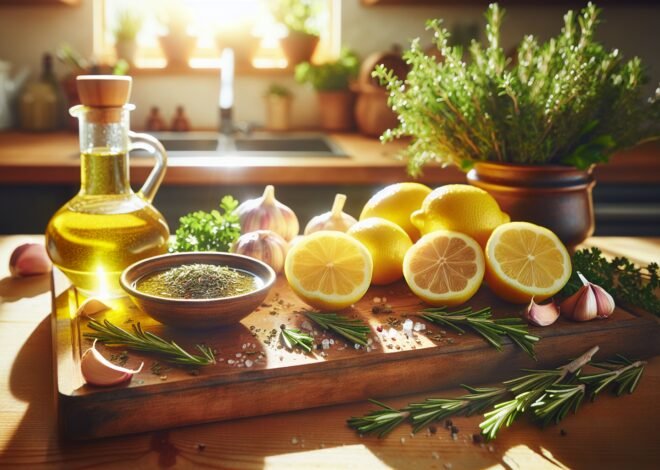
How to Make a Basic Vinigarette for Salads
Make vinaigrette to transform simple salads into culinary delights. A basic vinaigrette consists of only a few ingredients—typically oil, vinegar, salt, and pepper—but its flavor profile can elevate any dish. Did you know that vinaigrette has been a staple in European cuisine since at least the 14th century? This timeless dressing can be customized with herbs, garlic, or mustard, allowing you to tailor it to your preferences. In the following guide, you’ll learn the essential techniques for creating a perfectly balanced vinaigrette, along with tips for adding your twist to this classic. Discover the versatility of vinaigrette and give your salads a delicious makeover.
Understanding Vinaigrette Basics
Vinaigrette is a culinary staple that can transform any salad or dish with its vibrant flavors. Whether you’re a seasoned cook or a kitchen novice, mastering the basics of vinaigrette can elevate your meals effortlessly. Let’s delve into what makes vinaigrette a versatile and essential component in cooking.
What is a Vinaigrette?
A vinaigrette is a simple yet flavorful dressing, typically made by combining oil with vinegar or another acidic liquid. It serves as a base for countless dressings and marinades, celebrated for its ability to complement a wide range of ingredients. Originating from French cuisine, vinaigrette has become a global favorite, known for its refreshing taste and ability to enhance the natural flavors of dishes.
Essential Ingredients for a Basic Vinaigrette
Creating a basic vinaigrette requires just a few key ingredients, but the quality of these components is crucial for achieving the best results:
- Oil: Olive oil is a popular choice due to its rich flavor, but other oils like canola or grapeseed can also be used.
- Vinegar: Common options include balsamic, red wine, or apple cider vinegar. Each brings a unique taste.
- Salt and Pepper: These basic seasonings enhance the overall flavor profile.
- Optional Extras: Mustard, honey, or herbs can add depth and complexity.
The combination of these ingredients creates a harmonious balance that defines a classic vinaigrette, with endless possibilities for customization.
Importance of Oil-to-Vinegar Ratio
The oil-to-vinegar ratio is fundamental in crafting the perfect vinaigrette. A typical ratio is three parts oil to one part vinegar, but this can be adjusted to suit personal taste preferences. Striking the right balance ensures the vinaigrette is neither too oily nor too acidic. The ratio affects not only the flavor but also the texture and consistency of the dressing, making it a crucial aspect of vinaigrette preparation.
Step-by-Step Guide to Making Vinaigrette
Creating a delicious vinaigrette is an art that combines technique with creativity. This step-by-step guide will walk you through the process, ensuring your vinaigrette is always perfectly balanced and bursting with flavor. Let’s explore the essential steps to craft your vinaigrette masterpiece.
Choosing the Right Vinegar for Your Vinaigrette
Selecting the appropriate vinegar is vital as it forms the backbone of your vinaigrette’s flavor. Consider these options:
- Balsamic Vinegar: Offers a sweet, tangy flavor, excellent for salads featuring fruit or nuts.
- Red Wine Vinegar: Provides a robust taste, ideal for hearty salads with bold ingredients.
- Apple Cider Vinegar: Delivers a slightly sweet and fruity note, perfect for lighter, fresher salads.
The choice of vinegar should complement the overall theme of your dish, enhancing rather than overpowering the other ingredients.
Emulsifying Your Vinaigrette for Better Texture
Emulsification is the process of blending oil and vinegar into a smooth, cohesive mixture. This step is crucial for improving the vinaigrette’s texture and ensuring even distribution over your salad. To emulsify:
- Combine vinegar and any additional ingredients like mustard or honey in a bowl.
- Gradually whisk in the oil, pouring it in a slow, steady stream.
- Continue whisking until the mixture thickens and appears creamy.
Achieving a stable emulsion prevents separation and maintains the dressing’s consistency.
Adding Flavor Enhancers to Your Vinaigrette
Enhance your vinaigrette’s flavor by incorporating various ingredients that add depth and complexity. Consider these options:
- Mustard: Acts as an emulsifier and adds a tangy kick.
- Honey: Provides sweetness and balances acidity.
- Herbs: Fresh or dried herbs like basil, thyme, or dill contribute aromatic notes.
- Garlic or Shallots: Introduce a savory element, intensifying the vinaigrette’s taste.
Experimenting with different flavor enhancers allows you to tailor the vinaigrette to your palate and the dish you’re preparing.
Tips and Variations for Perfect Vinaigrette
Creating the perfect vinaigrette goes beyond mastering the basics. With a few tips and creative variations, you can elevate your vinaigrette to new heights. This section offers insights into preserving your creations and experimenting with unique flavor combinations. Discover how to make your vinaigrette not just good, but exceptional.
Storing and Preserving Homemade Vinaigrette
Proper storage is key to preserving the freshness and flavor of homemade vinaigrette. Follow these tips:
- Use Airtight Containers: Store vinaigrette in a glass jar or bottle with a secure lid.
- Refrigeration: Keep the vinaigrette in the fridge to extend its shelf life.
- Shake Before Use: Oil and vinegar may separate over time, so shake the container well before each use.
By storing vinaigrette correctly, you can enjoy its fresh taste for up to a week.
Creative Vinaigrette Variations to Try
Unleash your creativity by experimenting with unique vinaigrette variations. Here are some ideas to inspire you:
- Citrus Vinaigrette: Replace vinegar with fresh lemon or orange juice for a zesty twist.
- Herb-Infused Vinaigrette: Infuse oil with rosemary or thyme for a fragrant dressing.
- Spicy Vinaigrette: Add a pinch of chili flakes or a dash of hot sauce for heat.
- Fruit Vinaigrette: Incorporate pureed fruit like strawberries or raspberries for a sweet hint.
Each variation brings a new dimension to your dishes, allowing you to tailor flavors to suit any occasion.
Common Mistakes to Avoid When Making Vinaigrette
Even seasoned cooks can stumble when making vinaigrette. Avoid these common pitfalls:
- Overpowering Ingredients: Balance flavors to ensure no single ingredient dominates.
- Incorrect Ratios: Stick to the recommended oil-to-vinegar ratio for optimal taste.
- Poor Emulsification: Whisk thoroughly to prevent separation.
- Overseasoning: Add salt and pepper gradually, tasting as you go.
By steering clear of these mistakes, your vinaigrette will consistently achieve the perfect balance of flavors.
Overall, crafting a vinaigrette is a delightful exploration of taste and texture. With the right ingredients and techniques, you can create a dressing that’s as versatile as it is delicious. Whether sticking to the classic formula or venturing into imaginative variations, vinaigrette offers endless possibilities to enhance your culinary adventures.
Conclusion
Vinaigrette is a simple salad dressing made with a mixture of oil, vinegar, and seasonings. The standard ratio is usually three parts oil to one part vinegar, but this can be adjusted for personal preference. Common ingredients to enhance the flavor include salt, pepper, mustard, honey, or garlic. To prepare, ingredients are whisked or shaken together until emulsified. Vinaigrette can be used immediately or stored in the refrigerator for later use.
FAQ
What are the best ingredients to use in a homemade vinaigrette?
Fresh herbs, quality olive oil, and balsamic or apple cider vinegar make excellent choices for a homemade vinaigrette. Enhance flavors with Dijon mustard, minced garlic, or a touch of honey.
How can I store vinaigrette, and how long does it last?
Store vinaigrette in a sealed jar or bottle in the refrigerator. Homemade vinaigrettes typically last up to two weeks if kept chilled.
Can you make a vinaigrette without vinegar?
Lemon juice or lime juice serves as a great substitute for vinegar in vinaigrette recipes. These alternatives provide a fresh, tangy flavor profile.
What is the best oil-to-vinegar ratio for making vinaigrette?
An oil-to-vinegar ratio of 3:1 balances taste in vinaigrette. Adjust this ratio to suit personal preferences or specific recipes.
How can I make a creamy vinaigrette instead of a traditional one?
Add mayonnaise or Greek yogurt to your mix for a creamy twist on traditional vinaigrette. Blend until smooth for a rich consistency.
What are common mistakes to avoid when making vinaigrette?
Avoid using low-quality oil, which can affect flavor. Over-mixing may emulsify the vinaigrette too much, and insufficient seasoning can lead to blandness.











